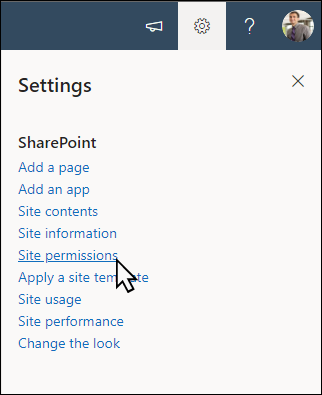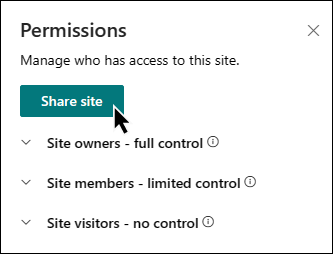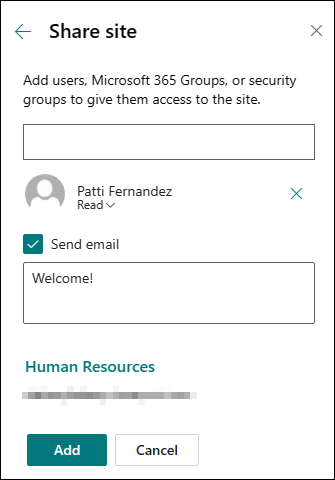Note: In spring 2024, we introduced the new SharePoint brand center. The SharePoint brand center offers a centralized branding management application that empowers you to customize the look and feel of your SharePoint site experiences. Learn more about the SharePoint brand center here.
The Brand Central site template is a communication site that’s designed to be a central hub where employees can access the latest brand assets and guidelines for your organization, understand brand principles and values, see examples of brand expression in action, and get answers to frequently asked questions.

This article gives you an overview of how to use elements of the SharePoint Brand Central communication site template and how to customize the site to fit the needs of your organization.
Site features
-
Customizable site that comes with pre-populated images, web parts, and content to inspire site editors when making customizations to fit the needs of your organization.
-
Pre-populated pages that make it easy for employees to get all the information they need to engage and learn about your organization's brand assets and guidelines, review examples of brand expression in action, and a help center providing answers to frequently asked questions.
Notes:
-
Some functionality is introduced gradually to organizations that have opted into the Targeted release program. This means that you may not yet see this feature, or it may look different than what is described in the help articles.
-
When you apply a template to an existing site, your content will not automatically merge with the new template. Instead, existing content is stored as a duplicate page in Site contents.
To get started, follow the steps to add the template to a new or existing site.
Note: You must have site owner permissions to add this template to your site.
Explore the pre-populated site content, web parts, and pages. Decide what site customizations you need to align with your organization's brand, voice, and mission.
-
Pre-populated pages:
-
Home page: Provides a landing place for employees to access images, guidelines, templates, and presentation tools.
-
Brand strategy: Provide employees with information on brand principles, examples, best practices, and objectives.
-
Marketing expression: Dive deeper into the organization's brand with information on advertising and co-branding, and provide access to branding files, upcoming marketing events, and a list of branding support contacts.
-
Help center: Provide employees with answers to frequently asked questions, branding support contacts, or have employees submit their branding requirements for review.
-
After you add the Human Resources communication site template, it's time to customize it and make it your own. Customize your site's look, site navigation, web parts, and content to fit the needs of your organization and employees.
Note: To edit a SharePoint site you must be a site owner or site member.
Here’s an overview of ways you can customize the Home page.
|
|
To get started, select Edit in the upper-right corner of the page to enable edit mode. As you work, select Save as a draft or select Republish to make your changes visible to viewers.
1. Use the Text and Image web parts to provide engaging content.

-
Begin by selecting the Text web part and select Edit web part

-
Edit your text directly in the web part.
-
Select the Image web part and select Edit web part

-
Select Change and select an image source.
-
Once you've chosen your image, select Insert.
Learn more about editing the Text and Image web parts.
2. Use the Button web part to help important links stand out on your site

-
Select the Button web part and choose Edit web part

-
Make changes to the button label, link, and alignment.
Learn more about using the Button web part.
3. Use the Quick links web part to provide easy access to resources.

-
Navigate to the Quick Links web part, select the link, and then select Edit web part

-
Edit the link, title, icon, and description if needed.
-
To add a link, select + Add links.
See different layouts and learn more about editing the Quick Links web part.
4. Use the Hero web part to highlight important policies, updates, and other useful resources.

-
Begin by selecting the Hero web part and select Edit web part

-
Then, select the Layer and Tile options that best suit the organization’s needs.
See different layouts and learn more about editing the Hero web part.
Customize the other pages of the site

-
Home: Make a robust landing page for visitors. Customize this page by editing the Text, Image, Quick Links, and Hero web parts. News, and Twitter web parts Call to action, .
-
Brand strategy: Provide information on brand principles, examples, best practices, and objectives. Customize this page by editing the Text, Quick Links, Hero, and Call to action web parts.
-
Marketing expression: Provide access to brand information, files, upcoming marketing events, and contacts. Customize this page by editing the Text, Quick Links, Hero, Image, Events, Document library, and People web parts.
-
Help center: Provide employees with information on brand related questions in the form of helpful links, answers to frequently asked questions, and a request for a brand review. Customize this page by editing the Image, Text, Call to action, and Quick Links web parts.
Customize the look and site navigation
Before you share your site with others, put the finishing touches on your site by ensuring users can find the site, navigate through links and pages easily, and quickly access content on the site.
-
Edit document libraries by updating the folder names and uploading resources.
-
Edit and customize site navigation.
-
Change the look of your site by customizing the theme, logo, header layouts, and the look of your site.
-
Add or remove pages on this site or the customize the navigation on your SharePoint site to accommodate existing content.
-
select to associate this site with a hub site within your organization, or add this site to an existing hub site navigation if needed.
Share your site with others after you've customized your site, reviewed it, and published the final draft.
-
Select Settings and then Site Permissions.
-
Select Share site.
-
Enter the name(s) of all users, Microsoft 365 Groups, or security groups to give them access to the site content and select their level of control (Read, Edit, Full Control).
-
Add a message for the email notification when sharing the site, or uncheck Send email to skip the email.
-
Select Add when finished adding members and setting permissions.
Learn more about managing team site settings, site information and permissions.
After you create and launch your site, the next important phase is maintaining site content. Ensure you have a plan to keep content and web parts up to date.
Here are site maintenance best practices.
-
Plan for site maintenance - Establish a schedule to review the site content as often as needed to ensure content is still accurate and relevant.
-
Regularly post news - Share the latest announcements and information to keep employees in the know and engaged. Add or remove a news post and show others who will be posting announcements how they can use SharePoint news.
-
Check links and web parts - Keep links and web parts updated to ensure you are leveraging the full value of your site.
-
Use analytics to improve engagement - View site usage by using the built-in usage data report to get information on popular content, site visits, and more.
-
Periodically review your site settings - Review and update settings, site information, and permissions, as needed.
More customization resources
Learn more about how to plan, build, and maintain SharePoint sites.
See more SharePoint site templates.














